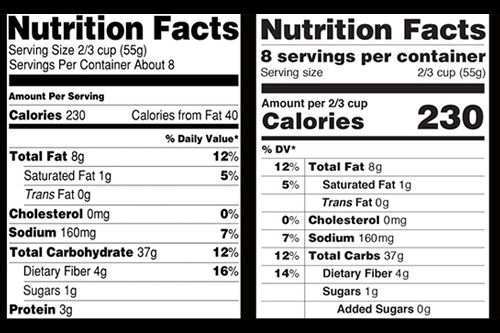How to Interpret a Nutrition Facts Label
How to Interpret a Nutrition Facts Label
January 07, 2016 at 9:00 PM

Most processed and prepackaged foods come with a nutrition facts label, but the information it contains can often be confusing and difficult to interpret. We wanted to break it down so you can know how many calories and grams of carbohydrates, fat, and nutrients you are consuming so you can stick to your nutritional goals.
The first thing you need to look at is the serving size. The label may say a serving size is one cup or that there are two servings in the package. The nutritional information listed below that applies to one serving. If the label says there are two servings in the package and you are planning to eat all of it, you need to double all of the listed amounts of carbohydrates, fat, cholesterol, sodium, and vitamins to know how much of each you are consuming.
The nutritional label will also list percent daily values for fat, cholesterol, sodium, carbohydrates, protein, vitamins, calcium, and iron. These are based on a 2,000-calorie-per-day diet. If the package says it contains 10 percent of the daily recommended amount of cholesterol in one serving and you eat two servings, you will be consuming 20 percent of your recommended daily value of cholesterol. If you are eating a lower-calorie diet, you will need to eat less than one serving to consume the same percent daily value. You may find it easier to keep track of grams or milligrams, rather than percent daily values. These should also be listed on the package.
When looking at percent daily values, 5 and 20 percent are magic numbers. For things that you want to eat more of (vitamins, calcium, and fiber), 5 percent is low and 20 percent is a good goal. For things that you want to limit (fat, saturated fat, cholesterol, and sodium), 20 percent is high. Look for foods that are closer to 5 percent.
Looking at percent daily values can allow you to eat some of your favorite foods while still meeting your nutritional goals. For example, if you want to eat a food that is relatively high in fat, you can choose other low-fat foods for the rest of the day to keep you below your recommended daily value of fat.
Don’t just use nutrition facts labels to cut back on things like fat, cholesterol, and sodium. You can also use labels to help you choose foods that are rich in vitamins, calcium, and fiber to help you meet your weight loss goals.


